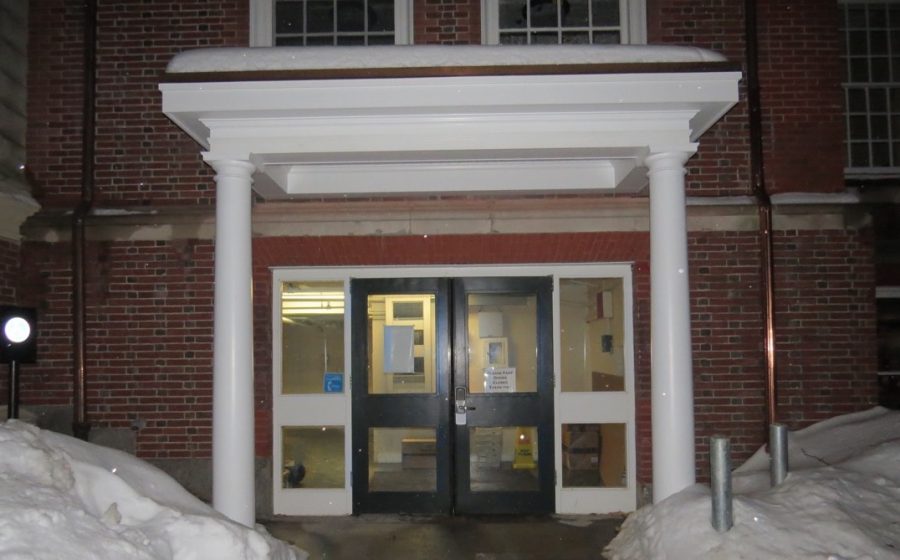Please excuse our mess: Groton’s constant construction
Recently, Groton has been investing time and resources into constructing and renovating facilities across campus. But have we been spending too much money on these projects, and are they necessary?
Let’s look at the biggest construction project the school has built recently: the new Schoolhouse. The overall cost was $48 million, according to Mr. Diaz and the Business Office. This includes the construction of the Sackett Forum, renovations of stairwells and lighting, and moving the IT and Business Office to Hundred House. Mr. Diaz disclosed that the money was raised from three different sources: $30 million came from donations, $15 million was taken out on loan from a bank, and the remaining $3 million came from a reserve specifically for large projects.
While $15 million dollars is a large amount of money to pay back, it is a favorable loan for the school for a few reasons. First, Groton is a non-profit organization, which allows the school to qualify for financing with lower interest rates. Secondly, the money is due to be paid back in 2035, giving the school almost 20 years to repay the bank.
While Groton received a favorable loan and spent reserve money, the Schoolhouse project still proved expensive. Was it money well spent? Mr. Adam Lamont certainly thinks so: “I think it’s changed the dynamic of the school, especially for upper schoolers and lower school prefects. It makes the library much more accessible for upper schoolers in Brooks House.” John Cecil ‘17 concurs: “I think it’s awesome. As someone who’s been here since second form, and who’s seen all the construction over the last 5 years, I think it’s made a positive impact.”
However, the new Schoolhouse is not the only construction project that the school is working on. Groton also spends around $4-5 million each year on smaller renovations such as roads, reroofing, and other repairs. As an economic rule of thumb, an organization should spend around 3 percent of its total value on repairs each year. Groton’s buildings and facilities are valued at around $250 million; 3 percent of $250 million is $7.5 million. Groton spends about $4-5 million dollars of its $7 million-dollar yearly repair budget, although the number changes each year. The remaining $3 million goes to the reserve fund for major construction projects such as the Schoolhouse.
The school was able to build the new Schoolhouse in a financially sensible manner. As for smaller, annual repairs, the school’s spending level fluctuates from year to year, but remains consistent with the 3% guideline. Groton has built and repaired necessary and useful facilities in an economical and cost-effective way.
Recently, Groton has been investing time and resources into constructing and renovating facilities across campus. But have we been spending too much money on these projects, and are they necessary?
Let’s look at the biggest construction project the school has built recently: the new Schoolhouse. The overall cost was $48 million, according to Mr. Diaz and the Business Office. This includes the construction of the Sackett Forum, renovations of stairwells and lighting, and moving the IT and Business Office to Hundred House. Mr. Diaz disclosed that the money was raised from three different sources: $30 million came from donations, $15-million was taken out on loan from a bank, and the remaining $3 million came from a reserve specifically for large projects.
While $15 million dollars is a large amount of money to pay back, it is a favorable loan for the school for a few reasons. First, Groton is a non-profit organization, which allows the school to qualify for financing with lower interest rates. Secondly, the money is due to be paid back in 2035, giving the school almost 20 years to repay the bank.
While Groton received a favorable loan and spent reserve money, the Schoolhouse project still proved expensive. Was it money well spent? Mr. Adam Lamont certainly thinks so: “I think it’s changed the dynamic of the school, especially for upper schoolers and lower school prefects. It makes the library much more accessible for upper schoolers in Brooks House.” John Cecil ‘17 concurs: “I think it’s awesome. As someone who’s been here since second form, and who’s seen all the construction over the last 5 years, I think it’s made a positive impact.”
However, the new Schoolhouse is not the only construction project that the school is working on. Groton also spends around $4-5 million each year on smaller renovations such as roads, reroofing, and other repairs. As an economic rule of thumb, an organization should spend around 3 percent of its total value on repairs each year. Groton’s buildings and facilities are valued at around $250 million; 3 percent of $250 million is $7.5 million. Groton spends about $4-5 million dollars of its $7 million-dollar yearly repair budget, although the number changes each year. The remaining $3 million goes to the reserve fund for major construction projects such as the Schoolhouse.
The school was able to build the new Schoolhouse in a financially sensible manner. As for smaller, annual repairs, the school’s spending level fluctuates from year to year, but remains consistent with the 3% guideline. Groton has built and repaired necessary and useful facilities in an economical and cost-effective way.cost-effective way.












